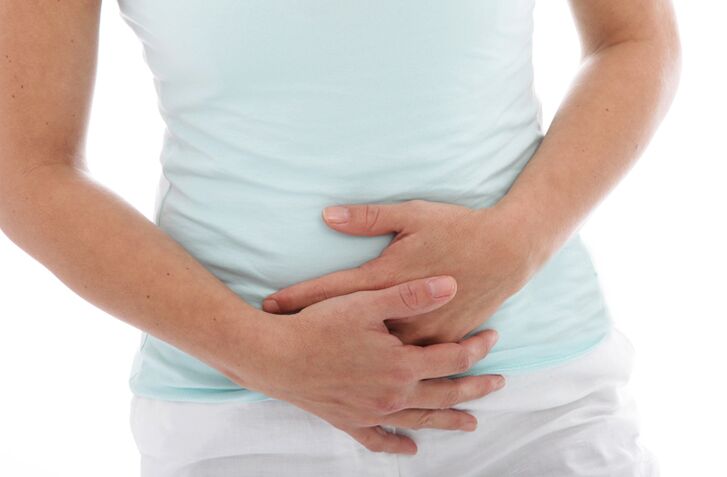Many women suffer when the first symptoms of cystitis appear; they began to treat themselves, consult pharmacists in pharmacies, and buy luxury drugs. They cannot imagine what the consequences of such treatment are, without knowing the cause, type and form of the disease. To avoid complications of the disease, it is necessary to undergo appropriate diagnostics.
Cystitis is an inflammation of the urinary tract and bladder mucosa. This disease is mostly women. It is caused by the structure of the urethra in women, which is shorter and wider than in men, so infection or penetration of harmful microorganisms occurs more often.
Cystitis according to ICD-10
According to the international classification of diseases, this type of inflammation belongs toclass XIV, the code#30. 0.
According to the international classification of diseases, there are several forms of cystitis:
- Acute cystitis code No. 30. 0.
- Chronic code (interstitial) No. 30. 1.
- Code of chronic cystitis (others) No. 30. 2.
- Trigon code No. 30. 3.
- Radiation type of inflammatory process code No. 30. 4.
- Other forms of cystitis No. 30. 5.
- Unspecified cystitis No. 30. 6.
Each form of the inflammatory process requires individual treatment. Therefore, the disease must be diagnosed in a medical facility and the drugs recommended by the doctor must be taken.
Causes of cystitis in women
People suffer from this disease30% of women under the age of 45. The main reason for the occurrence of the inflammatory process is the special anatomical structure in which there is a relationship between the flora of the female reproductive and urinary systems. Other reasons include:
- Improper genital hygiene.
- Passive (sedentary) lifestyle.
- Pressure.
- Unbalanced diet.
- Eat spicy and fatty foods.
- The presence of gynecological diseases and chronic venereal diseases.
- Unprotected sex.
- Prolonged hypothermia.
- Bladder injury.
- Changes in hormone levels.
- Reduces immunity.
- Synthetic underwear.
The most common cause of bladder inflammation is an infection with an intestinal infection.
What bacteria cause inflammation?
Cystitis occurs due to infection with various pathogenic bacteria:
- Candida fungus.
- Escherichia coli.
- Pseudomonas aeruginosa.
- Gonococci.
- Ureaplasma.
- Mycoplasmas.
- Trichomonas.
- Chlamydia.
- Enterobacter.
- Treponema pallidum.
- Staphylococci.
- Streptococci.
- Enterococcus.
- Meningococcus.
- Coliform microbes.
- Proteus.
- Salmonella.
- Viruses.
- Listeria.
- Klebsiella.
The most common opportunistic bacteria that cause the acute inflammatory stage is Escherichia coli.

The first signs of the disease in women
Within 24 hours, the first signs of illness appear after pathogenic bacterial infection or hypothermia. These signs include:
- Weakness.
- Low grade fever.
- Frequent urination in small quantities.
- Itching on the genitals.
- Drawing pain in lower abdomen at night.
- Painful urination.
- The appearance of discharge from the genitals.
Urine becomes cloudy with sediment in the form of flakes, mixed with blood or pus.

Symptoms of cystitis in women
The main symptoms of the inflammatory process in women:
- Urine is released frequently and in small portions.
- Burning sensation when emptying the bladder.
- At night, frequent urge to urinate.
- Cloudy urine mixed with mucus, blood, and pus.
- Heaviness in the lower abdomen.
- Urine has an unpleasant and sharp smell.
- Disturbing pain appears in the lower abdomen, kidneys and spine.
- Low grade body temperature.
If one or more symptoms are detected, it is necessary to undergo a diagnosis to avoid complications or the development of urolithiasis.

Urinary incontinence with cystitis in women
Urinary incontinence in women with this disease is a signdisease neglect. The main reason is self-medication or not wanting to visit a medical facility.
Urinary incontinence occurs due to developmentinflammatory process after infection in the bladder. The nerve endings on the bladder wall become irritated, causing a frequent urge to urinate. If the treatment is not correct or the treatment is neglected, the compulsion becomes strong and can no longer be controlled.
Are your kidneys sick with cystitis?
The kidneys are part of the urinary system and produce urea, which makes up urine. Urine exits through the ureter, collects in the bladder, and then exits. If the inflammatory process in the bladder becomes advanced, the infection rises through the ureter to the kidney, which is why pain in the kidney occurs with cystitis.
If the pain in the kidney begins to intensify after cystitis, this means that the patient is developing a disease - pyelonephritis. Therefore, if pain in the kidneys occurs, you should immediately see a doctor for tests and diagnosis of the disease.
Types and forms of cystitis in women
Modern medicine classifies cystitis depending on the nature of the disease, the cause of its occurrence, morphology, stage of development and spread of the inflammatory process. Cystitis can occur in the following forms:
- spicy– inflammation of the mucous membrane of the bladder due to various infections.
- Chronicle– differs from acute cystitis in symptoms that disappear with periodic appearance.
- Interstitial- characterized by the formation of malignant tumors on the wall of the bladder. This is a dangerous pathology that requires surgical intervention.
- Honeymoon cystitis- this is a special form, it is typical for girls who start having sex. During the defloration process, foreign bacteria penetrate into the vaginal cavity, which causes an inflammatory process.
Most experts identify the following types of cystitis:
- ContagiousCystitis is caused by harmful bacteria and microorganisms that enter the bladder.
- Traumatica kind of disease that occurs due to injuries and bruises on the urethra.
- chemical substanceCystitis occurs when not treated properly or when the body is exposed to toxic substances.
- Bleedingthe species occurs as a result of a viral disease.
- HypercalceuricThis type occurs in women with impaired kidney function.
- Parasitethe species occurs due to the penetration of parasites (worms) from the anus into the urethra.
- SexuallyCystitis occurs in women who often change sexual partners.
- Raycystitis occurs during procedures with radiation exposure to the body.
- allergiesThis type occurs when allergens enter the body and can cause an inflammatory process.
- CervixCystitis is inflammation of the bladder neck.
- fungusthe species develops if there is Candida fungus in the body.
- HormonesCystitis in women occurs with an increase in the level of estrogen in the body, which reduces immunity and facilitates the penetration of infections.
Recurrent cystitis
Recurrent cystitis is a type of acute inflammation of the genitourinary organs that occursmore than 3 times in six months. Causes of recurring types:
- Chronic failure to observe the rules of personal hygiene.
- Genetic predisposition.
- Anatomical anomalies, such as dystopia.
- Narrowing of the urethra.
- Stones or sand in the bladder.
- Frequent change of sexual partners.
- Gynecological diseases.
- Persistent hypothermia.
For recurrent types of disease, treatment is the same as for acute cystitis.
Diagnostics
The doctor conducts an initial examination of the patient, collects an anamnesis, and writes a referral for the test:
- General blood analysis.
- General urine analysis.
- Bacteriological culture of urine.
- Vaginal microflora smear.
- Ultrasound.
- Cystography.

Based on the test results, the doctor makes a diagnosis and prescribes the appropriate treatment.
How long does it take to treat cystitis in women?
The doctor prescribes a course of treatmentat least 10-14 days. The duration of treatment will depend on the form and type of cystitis, as well as the possibility of recurrence. The inflammatory process is treated with drugs in several stages. Medicines themselves can lead to the development of complications, and treatment will take a long time.
Methods and drugs for the treatment of cystitis in women
If cystitis occurs, first of all, you need to visit a doctor and undergo tests to find out the cause of the occurrence.
To treat diseases of the genitourinary organs, antibiotics, herbal medicines, warm baths, and folk remedies are prescribed. Treatment methods and drug dosages are determined by the doctor.
During drug treatment, complex treatment is carried out with antibiotics, antispasmodics, probiotics, herbal medicines, and in case of severe pain, painkillers are prescribed.
During treatment with antibiotics, the intestinal microflora suffers, so doctors prescribe probiotics.

For severe spasms, antispasmodics are prescribed.
Herbal medicine is prescribed by the doctor to relieve the inflammatory process in the urinary system. This is a preparation based on herbs and plant flowers that are effective in combating the inflammatory process. This includes:
- Lingonberry leaves.
- Bearberry.
- Products based on cranberry fruit and medicinal herbs.
Therapeutic baths will help relieve spasms and have an antibacterial effect. Herbal decoctions, infusions and oils are added to the bath:
- Chamomile flowers.
- A collection of herbs for the urinary system.
- Calendula.
- Series.
- St. John's wort.
- Eucalyptus oil.
- Lemon oil.
- Sage oil.
- Lavender oil.
For quick and effective treatment, complex therapy is carried out.
Is it possible to cure cystitis without antibiotics?
Treatment without antibiotics is prescribed only in cases of acute type of disease; for treatment,antispasmodic and antimicrobial drugs. In most cases, the acute form becomes chronic, where antibiotic treatment is unavoidable.
Do they give sick leave for cystitis?
Cystitis is a disease in which the inflammatory process develops rapidly. In the acute type of illness, the body temperature often rises, which indicates the need for bed rest, which means you need to issue a sick leave certificate.
In the case of a chronic illness, sick leave is not issued, because the illness has no obvious symptoms. It should be remembered that for treatment it is necessary to undergo tests and undergo diagnostic procedures, which will also take time.
Consequences and complications
This disease, in its acute and chronic form, can be treated quickly and effectively, but if the treatment is carried out independently and incorrectly, the inflammation takes another form, complications arise that develop into other diseases. The consequences and complications include:
- Cystitis turns into an interstitial, hemorrhagic, gangrenous form.
- Pyelonephritis.
- Bladder empyema.
- Paracystitis.
- Trigonite.
The danger of complications is that new diseases arise in the body.
Prevention
To avoid this disease, it is important to follow the following rules and recommendations:
- Maintain a drinking regimen.
- Follow the rules of personal hygiene.
- Maintain a rest and sleep schedule.
- Dress for the weather.
- Eat a healthy and balanced diet.
- To reject bad habits.
- Drink a decoction of diuretic herbs.
- Exercise.
- Take vitamins.
It is important to take care of your health, visit the doctor, diagnose diseases in time and take preventive measures.




























